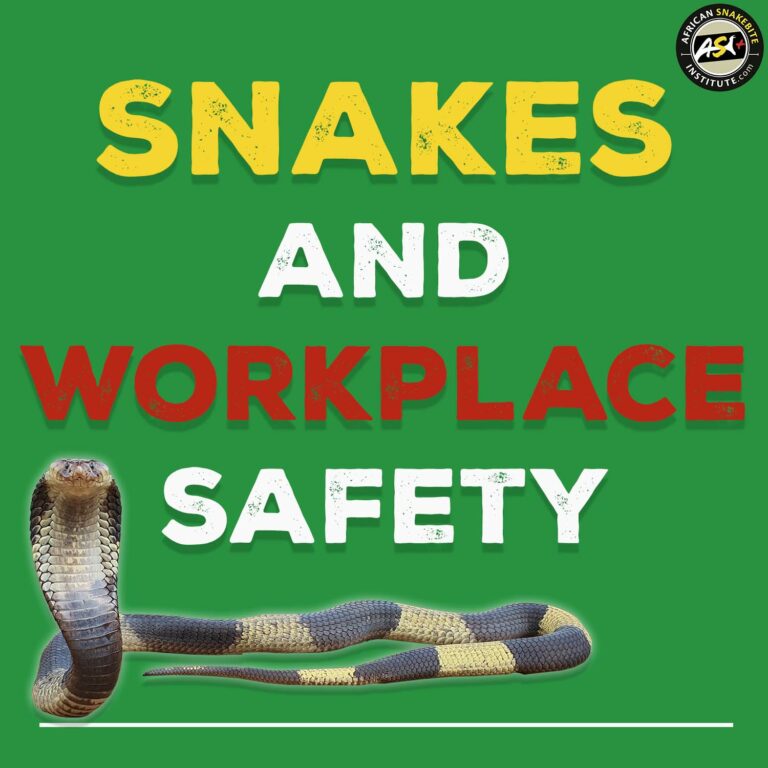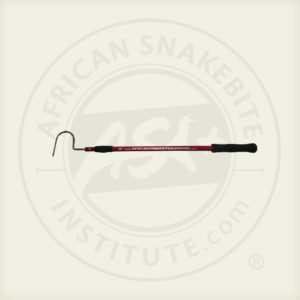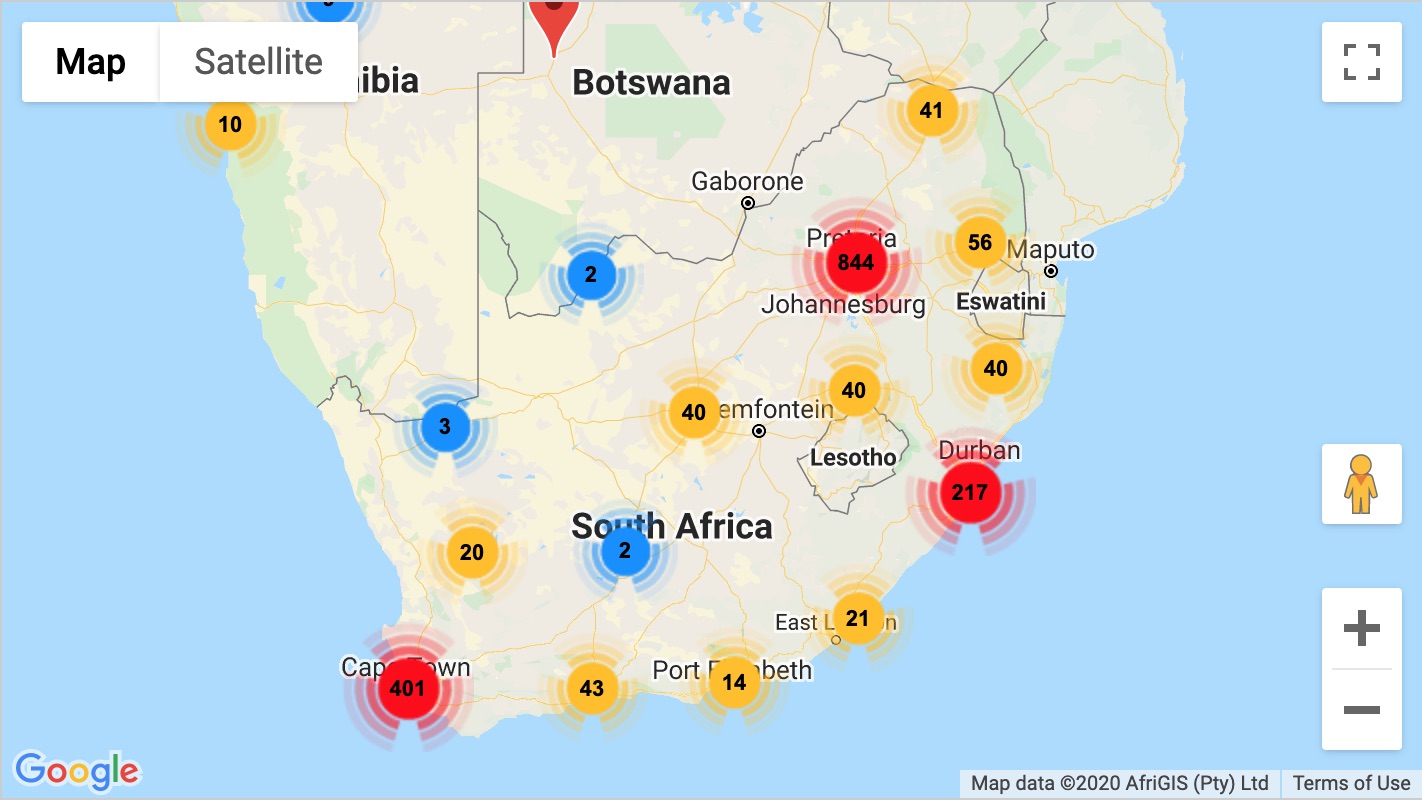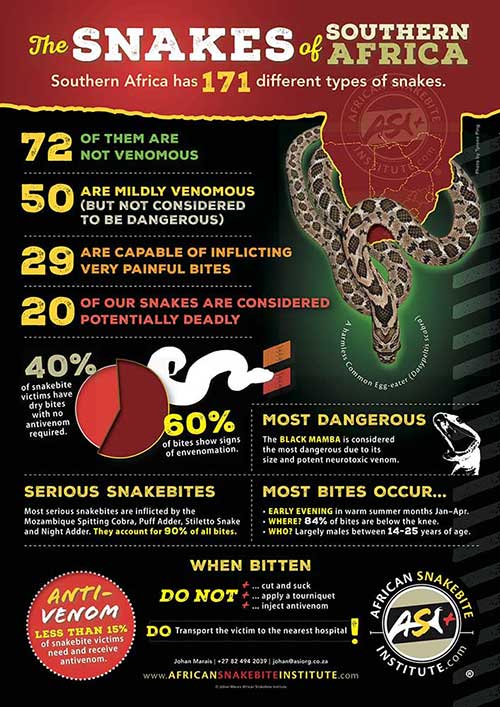PLEASE NOTE. Our offices will be closed from the 12th of December 2025 – until the 5th of January 2026. Last date for orders will be the 8th of December 2025. Any orders placed after the 8th of December 2025, will only be dispatched after the 5th of January 2026.
As a Health and Safety Officer – here’s what you need to know about snakes on site.
 Snakes may not be the most common hazard you think of when conducting a site risk assessment, but in many regions, they pose a real and sometimes underestimated threat. Whether you’re working on a construction site, in mining, solar farm, wind farm, agriculture, or any outdoor setting, it’s vital to be aware of how to manage the risks associated with snakes to protect workers and maintain a safe working environment.
Snakes may not be the most common hazard you think of when conducting a site risk assessment, but in many regions, they pose a real and sometimes underestimated threat. Whether you’re working on a construction site, in mining, solar farm, wind farm, agriculture, or any outdoor setting, it’s vital to be aware of how to manage the risks associated with snakes to protect workers and maintain a safe working environment.
- Understand the Risk
Snake encounters are more likely in certain environments, particularly rural, bushland, or undeveloped areas. Warmer months and areas with long grass, piles of debris, or water sources also increase the likelihood of snake presence. Some species are venomous and potentially deadly, while most, though non-venomous or only mildly venomous, can still cause injury and panic.
As a Health and Safety Officer, your first responsibility is to identify if your site falls within a high-risk area for snakes and to educate staff accordingly.
- Know Your Local Snakes
It’s essential to be familiar with:
- The types of snakes native to your region.
- Which ones are venomous vs. non-venomous.
- Their behaviour and likely hiding spots.
- What to do in the event of a sighting or bite.
Liaising with a company who specializes in snake education can be hugely beneficial.
The African Snakebite Institute has created multiple free resources, which are available to assist with snake identification and awareness.
The Free ASI SNAKES app is available on the Playstore and App Store, and has a feature that uses your phones coordinates, to predict snake species in your region.
Additionally, there are over 400 free posters available on the ASI website that cover most towns and regions of South Africa and over twenty African countries.
These can be downloaded for free from the website and printed to place on site. If you would like a poster designed specifically for your site, feel free to send an email to snakes@asiorg.co.za and we can make you a custom poster with your company logo added – free of charge.
- Prevention is Key
Implement the following control measures to minimize snake encounters:
- Maintain site cleanliness: Clear vegetation, tall grass, scrap materials, and wood piles regularly. Snakes feel exposed in open areas and prefer to hide or be near cover. By reducing cover you will reduce the attraction of the site to snakes.
- Seal entry points: Ensure site buildings or temporary structures are sealed to prevent snakes from entering. This can be easily achieved by placing foam strips under doors and around windows to ensure a tight seal.
- Limit food waste: Rodents are a food source for snakes, so managing waste discourages both pests.
- Training and Awareness
Ensure all workers receive snake safety training that includes:
- How to identify common snake species.
- How to behave if a snake is seen (e.g., do not approach or attempt to kill the snake).
- What PPE can provide partial protection (e.g., snake gaiters or boots in high-risk areas).
- Emergency response and first-aid procedures for snake bites.
Regular toolbox talks and visual safety signage around the site can reinforce key messages.
Have a team of trained snake handers – on-site.
- If snake encounters are a regular occurrence on your site, earmark 10-15 individuals who can undergo venomous snake handling training with an accredited training provider.
- Ensure you have enough staff trained to cover multiple shifts.
- It’s of vital importance that snake handlers follow explicit safety instructions that comply with all the company’s health and safety regulations.
- Snake handlers are not to make physical contact with any snakes. Either during training, or when doing removals on-site. It’s an unnecessary risk. At no stage should employees be permitted to grab snakes by the tail or in the neck region.
- Ensure you use an accredited training provider, and not a local “snake expert” to guarantee your team has the best possible training.
- If required, make sure the snake handlers have the appropriate permits to catch and release snakes. The training provider will be able to assist you with this information.
- Have at least two full sets of venomous snake handling equipment per area. The snake handlers must have easy access to these kits, and should be able to pick-up-and-go when a snake sighting is reported. See recommendations for corporate sites here:
- Ensure all your snake handling equipment is in clean, working order.
- Emergency Response Planning
An effective emergency response plan must include:
- Immediate steps following a bite (immobilize the limb, call emergency services, avoid movement).
- Location of first aid kits and pressure bandages – not arterial tourniquets (pressure bandages only for bites from snakes with neurotoxic venom like the Black Mamba)
- Contact details of the nearest medical facility
- Clear communication and an emergency transport protocol.
Appoint and train first aiders to manage snakebite incidents and conduct drills to ensure team readiness.
- Engage the Experts
If a snake is spotted on-site:
- Evacuate the immediate area. Make sure staff are at kept at least 5 meters away from any snake.
- Contact a certified snake catcher to handle the removal.
- Do not allow untrained personnel to approach or interact with the animal. Killing of the snake goes against the environmental policy of most sites.
Conclusion
Snakes on-site don’t have to result in panic or danger. With the right planning, training, and controls in place, you can significantly reduce the risk they pose. As a Health and Safety Officer, your proactive approach can make all the difference in ensuring a safe and confident workforce — even when nature gets a little too close.
For more information on on-site training – click here or email us on courses@asiorg.co.za
For more information on snake handling equipment and PPE – click here or email us on info@asiorg.co.za
Search
Shopping Cart
CONTACT US:
Product enquiries:
Caylen White
+27 60 957 2713
info@asiorg.co.za
Public Courses and Corporate training:
Michelle Pretorius
+27 64 704 7229
courses@asiorg.co.za
Featured Products
-
 ASI Collapsible Snake Hook - 1.2 m
R650.00
ASI Collapsible Snake Hook - 1.2 m
R650.00
-
 Rangers Book Combo 1
Rangers Book Combo 1
R1,450.00Original price was: R1,450.00.R1,305.00Current price is: R1,305.00. -
 ASI Book Combo 2
ASI Book Combo 2
R2,210.00Original price was: R2,210.00.R1,880.00Current price is: R1,880.00.


